Most writing tries to avoid cliché, understanding that an overused idea is one that has lost its power. It often feels as if video games take the opposite approach, gleefully piling tropes high upon their back like Labyrinth’s junk lady. Sure, they sacrifice the opportunity to say anything affecting or which feels true, but presumably the theory is that reminding you of a dozen other films, TV shows, books and games you like is just as good.
Enter Lost Records: Bloom & Rage, hunched over from the weight of all the teen TV shows and young adult novels stacked atop its shoulders.
You play as Swann, a teenage girl who in 1995 lives in a small fictional town in Michigan called Velvet Cove. Swann and her family are moving to Canada at the end of the summer, but a run-in with the town’s bullies leads to an intense new friendship with Nora, Kat and Autumn, three other teenage girls. Nora and Autumn are aspiring musicians, and wannabe filmmaker Swann becomes their videographer as they rehearse songs, make music videos, and turn a seemingly abandoned cabin in the woods into a teenage hideout.
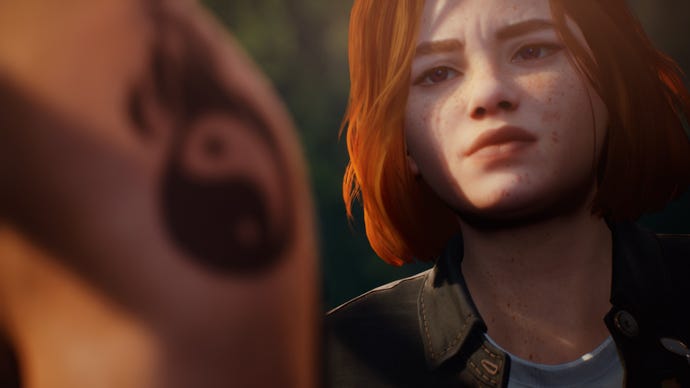
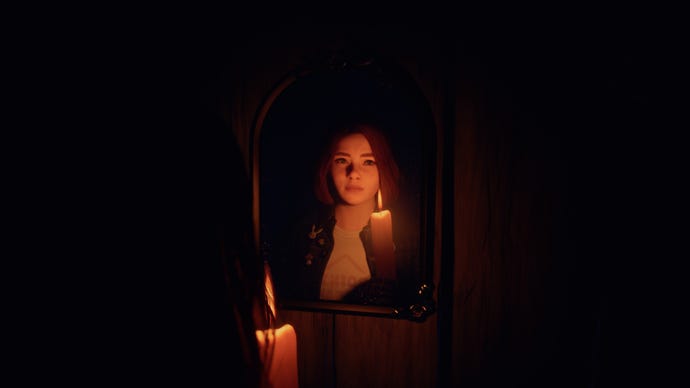
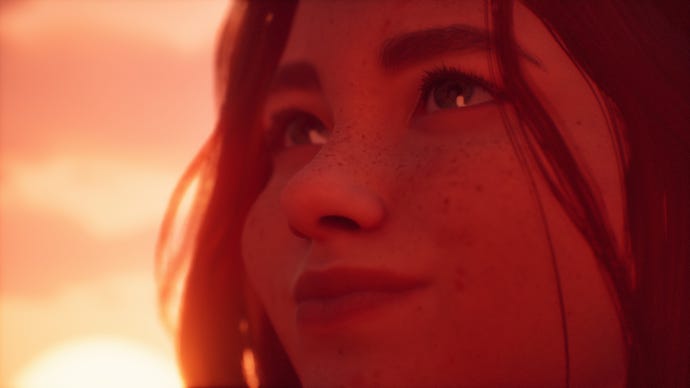
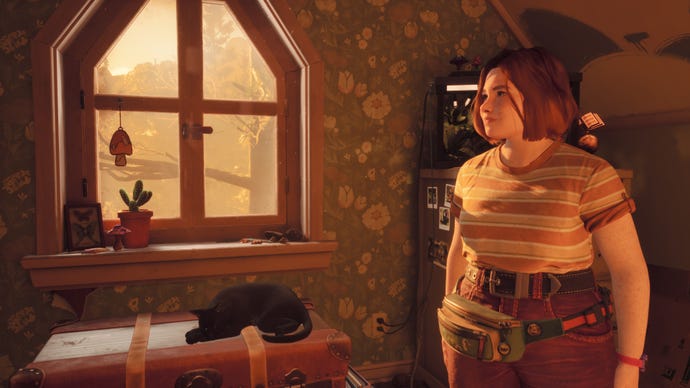
As a player, this means you have a camcorder with you at all times which you can bring out to film short clips of whatever you please. These are basically collectibles – film X birds, film Y pieces of graffiti, and so on – but if you capture certain characters or scenes they form “memoirs”, brief montage videos which you can edit by selecting and re-ordering shots. I didn’t feel much freedom or creative spark in doing so, but it’s another trope gathered. Coming-of-age dramas often have characters who seem nostalgic for their own moment, and their self-reflection is often expressed through a camera lens. Think of Dawson, whose story culminates in him creating a TV series about his life called “The Creek”; think of The Wonder Years’ opening titles; think of Max’s photography in Life Is Strange, a previous Don’t Nod game which Lost Records evokes constantly.
Prehistoric vlogging aside, and bar a couple of padlock puzzles, your main interaction lies in dialogue. Swann is in near constant conversation with her friends, individually and in a group, with your choices affecting her relationships and the course of the story. Or so we’re told via interface elements. Lost Records isn’t the kind of game that pivots rapidly and rewards experimentation, and if I encountered consequences to any choice I made, they were opaque. In fairness, this is Tape 1: Bloom, with the concluding Tape 2: Rage due for release in April.
Not much happens, plot-wise, for most of this first half’s running time. The intent seems to be to let players bask in the good vibes of the four new friends, but I found it all too slow. If you’re going to make a hangout game, those friends better be a good hang, and while Nora, Autumn and Kat are a likeable bunch, they too often felt like uncomplicated archetypes, designed more for projecting yourself upon than being exciting to spend time with.
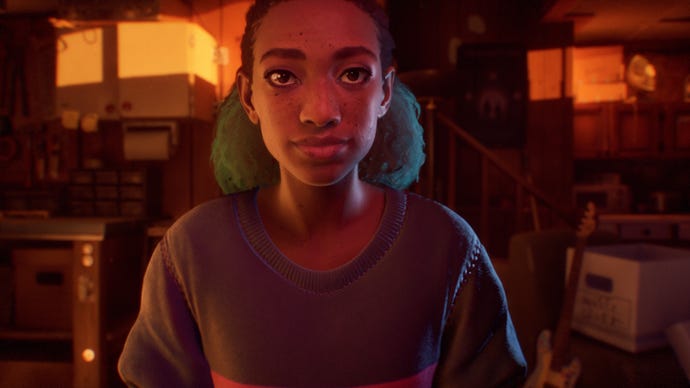
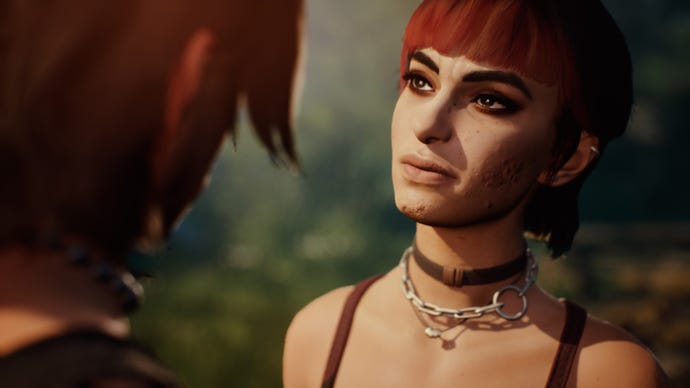
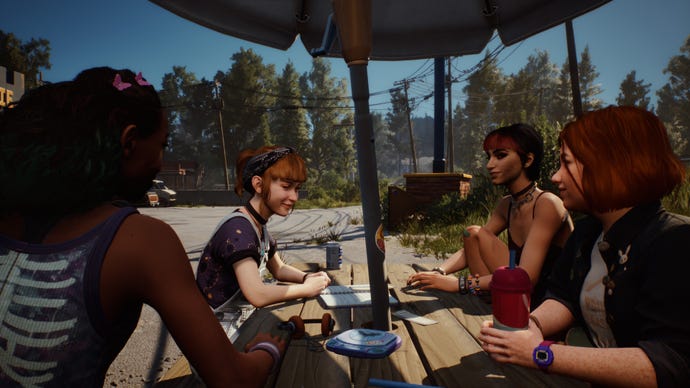
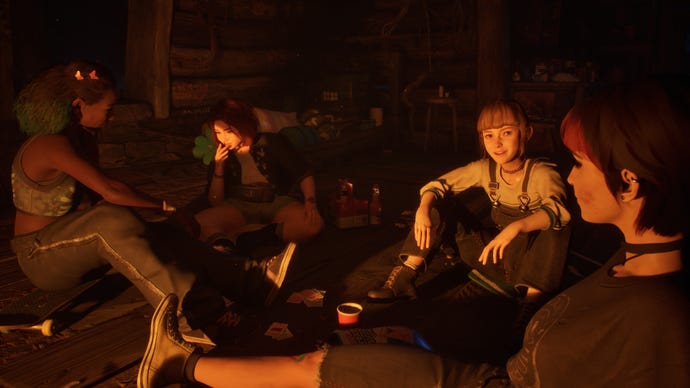
Without a clearly branching plot, the most significant feedback you get during conversations is the icon of a heart growing or breaking depending on your dialogue choice. Is it too much to say I hate this? Lost Records is at times cloyingly sentimental, and its characters are concerned with authenticity most of all. Swann, in an early scene, is explicitly praised by her friends if she’s honest about her music taste rather than faking to impress them.
And yet the UI scolds the player constantly. There were times when I’d choose a dialogue option because it sounded fun, like I was playing along with a friend, only to be met with a breaking heart. Alright, so none of these characters are up for banter, at least outside of cutscenes, but I can’t work out why I would ever want to choose an option that makes one of my friends like me a little less. Checkpoints are frequent and re-doing a conversation rarely requires you to lose more than a few minutes of progress, and though I endeavoured to be authentic to myself or at least to Swann, I’m too weak not to min-max my friendships even when it flattened the emotional journey and stripped my actions of agency.
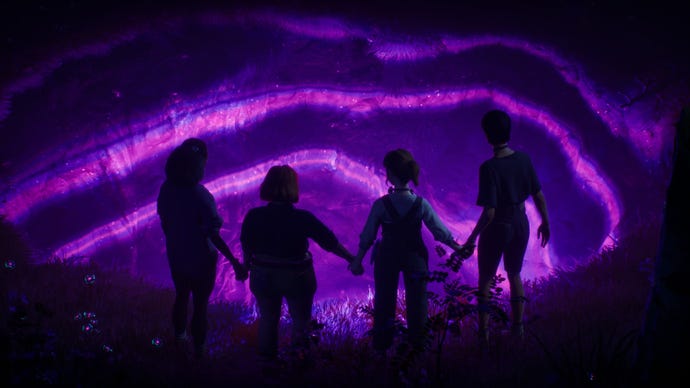
Thankfully your forest hikes, furtive cigarettes and games of truth-or-dare are complemented by scenes set in 2022, when the friends are reuniting in Velvet Cove for the first time in 27 years. I much preferred these sections, although they’re comparatively brief. The characters are immediately more complex and interesting for having lived adult lives, and their relationship dynamics are more compelling for the ways we can see they’ve changed since that wet hot American summer. This later timeline reaches back and makes the on-the-nose depiction of the 1990s richer, too. Certain items in 1995 will present the player with a ‘Reminisce’ prompt, allowing the characters in 2022 to reflect on their hometown and their younger selves.
This feels like a rare moment of synchronicity between the story and the storytelling techniques used to tell it. Otherwise, there’s very little here that moves the format forward from Don’t Nod’s Life Is Strange in 2015.
We’re introduced to the 2022 version of Swann in her car during a phone conversation that makes several references to the Covid-19 pandemic. She has a mask with her, too. It’s not subtle, but I was immediately engrossed by such a mundane depiction of an event most video games would ignore. This sense of immersion survived about 40 seconds. Swann leaves her car to enter a bar, which has a bottle of hand soap outside and a box of free masks. Great! I interacted with them and– I picked up the box of masks, where it became a rotatable object floating in space in the middle of my screen.
What does it say about Swann that it’s 2022 and she doesn’t wash her hands or wear a mask before entering a public space? “The budget couldn’t cover a bespoke handwashing animation”, probably. What does it say about her that she doesn’t worry about transmission via contact with surfaces? “It doesn’t say anything, this is just how video games work,” almost certainly. But I think those are poor excuses. One of the best pieces of writing advice is “every word should tell.” Perhaps a corollary for video game narratives might be, “Every interaction should tell.” Lost Records’ design feels like a collection of expected tropes just as much as its story does. I just wish video games would stop turning their protagonists into weird gremlins who go around picking up and rotating trash they found on the ground.
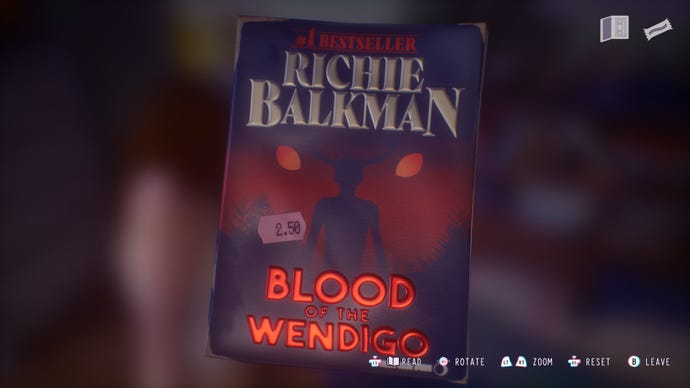
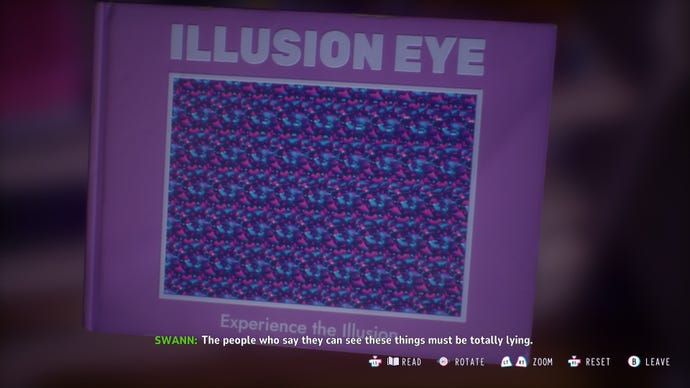
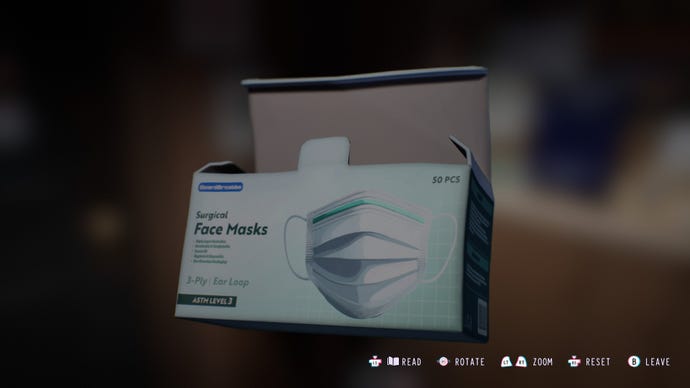
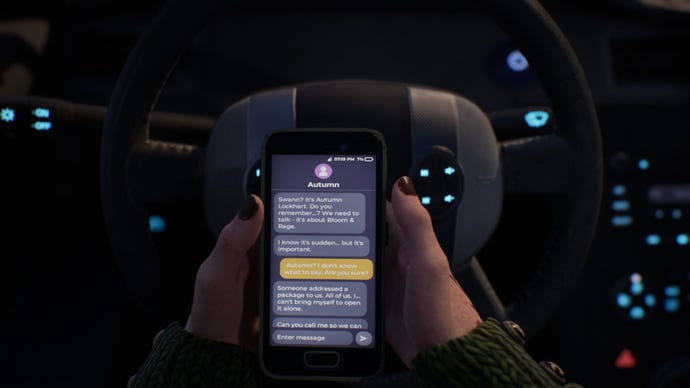
Is it possible that this video game of Young Adult tropes and teenage girl protagonists just isn’t meant for me? I have a few rebuttals to that idea. For one, hey, this game also contains the tired 40-something version of those characters, which I obviously find deeply relatable. I was also a kid in the ’90s and feel a growing nostalgia for Hey Arnold! and my Nintendo 64. I bet I’d love Yellowjackets, and I own a Rainbow Rowell novel and one day I might even read it, but really I just think that good writing can transcend demographics.
Although the final reason I’d argue against the “isn’t for me” label is simple: I want to play more of it.
Look, I can talk all day about the parts of Lost Records that didn’t work for me. If I hadn’t been playing it for review, I probably would have stopped after a couple of hours and never gone back. As it is, I reached its climax and it finally introduced the drama and the stakes that were missing from the rest of the story. Lost Records is bland, derivative, lacks momentum, does not reward player agency, and it twice made me cringe so hard I had to look away from the screen. I wish it was half as long as it is. I wish it had learned to let go of the ideas that have lost their power, like Sarah does in Labyrinth. I wish it had learned you can tell your coming-of-age story about a teenage girl with energy and originality… like Labyrinth. I am, despite all of that, looking forward to finding out whether any of it pays off when the second and final part releases on April 15th.











Add comment